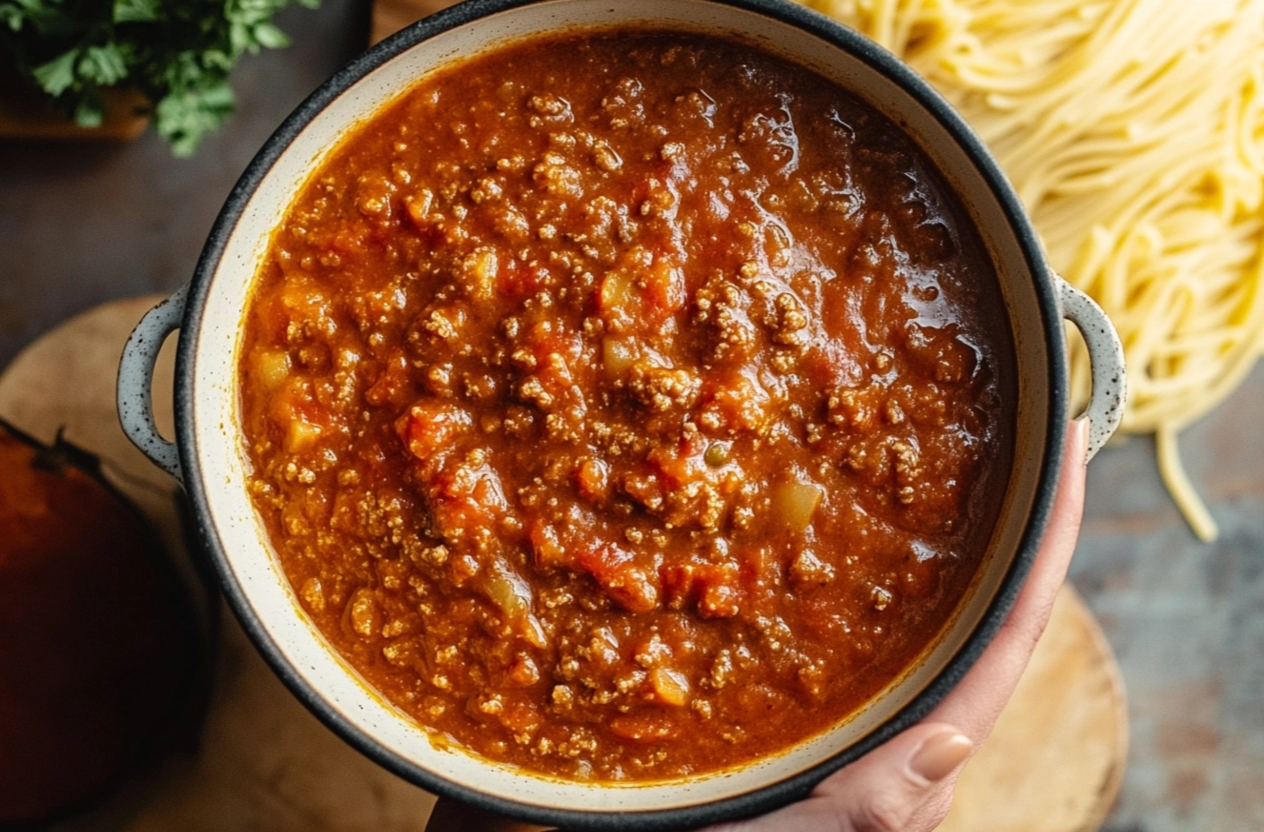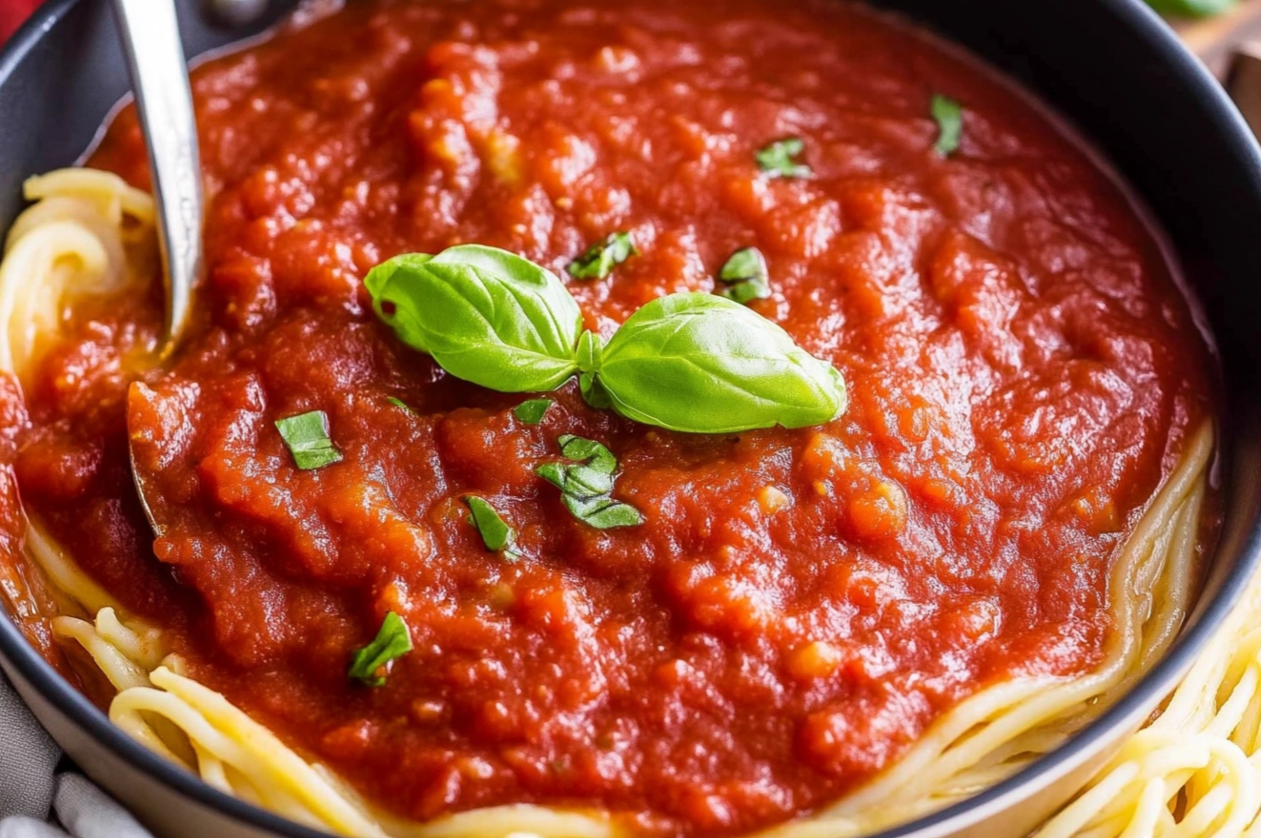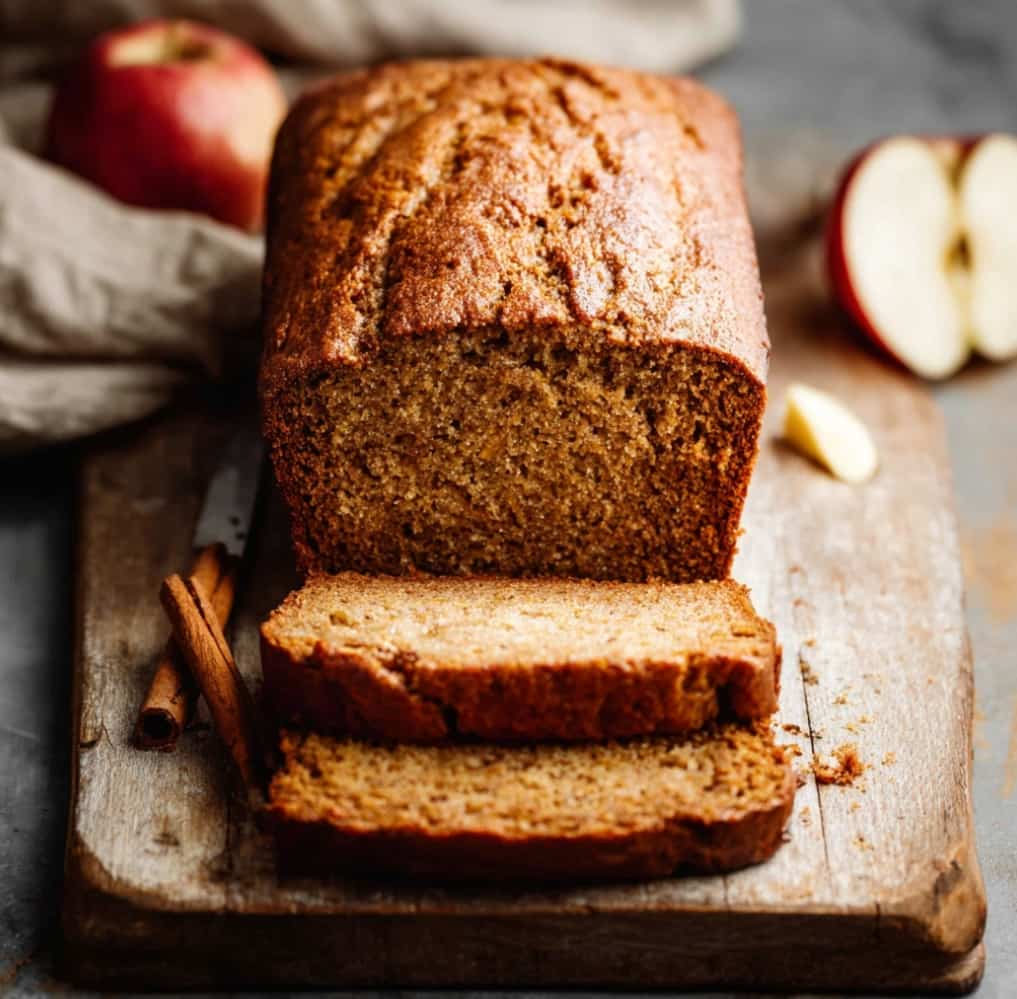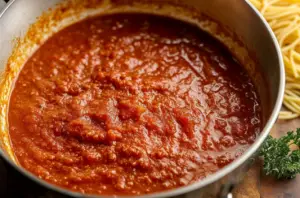Introduction to Homemade Spaghetti Sauce
Why Homemade Spaghetti Sauce is the Best Choice
Making homemade spaghetti sauce ensures a rich, authentic taste that surpasses store-bought varieties. With fresh ingredients and proper seasoning, this sauce delivers deep flavors, perfect for any pasta dish. Unlike pre-packaged options, a homemade version contains no artificial preservatives or excessive sodium.
The Key to a Perfect Sauce
A great homemade spaghetti sauce starts with high-quality ingredients. Using fresh tomatoes, extra virgin olive oil, and fragrant spices like oregano and Italian seasoning enhances the taste. Adding a bit of sugar balances the acidity of the crushed tomatoes, creating a smoother, well-rounded flavor. For those looking to explore an authentic Italian sauce, this guide provides essential techniques.
Healthier and Customizable
Unlike jarred sauces, making homemade spaghetti sauce allows full control over sodium, sugar, and oil content. It can be adjusted to fit various dietary needs, including low-carb, gluten-free, and vegan diets. If you’re looking for the best tomatoes for pasta sauce, this article explains why San Marzano tomatoes are the top choice.
What You’ll Need
- Tomatoes: Fresh or canned crushed tomatoes
- Aromatics: Garlic, onions, and green peppers
- Seasoning: Oregano, Italian seasoning, bay leaf, salt, and pepper
- Enhancers: Tomato paste, sugar, and parsley
With these ingredients, you’ll create a sauce that’s rich, flavorful, and perfect for any pasta dish.

Essential Ingredients and Basic Recipe
Choosing the Right Ingredients
Selecting the best ingredients is key to making a rich and flavorful homemade spaghetti sauce. Using extra virgin olive oil enhances the depth of taste, while lean ground beef adds a hearty texture. Fresh garlic, onions, and green peppers provide a strong aromatic base. The combination of crushed tomatoes, tomato paste, and tomato sauce results in a perfectly balanced consistency.
Step-by-Step Classic Spaghetti Sauce Recipe
- Heat the Oil – In a large pot, warm 1/4 cup extra virgin olive oil over medium heat.
- Sauté the Aromatics – Add chopped onions, minced garlic, and green pepper, stirring until softened.
- Cook the Meat – Brown 1 1/2 lb lean ground beef, breaking it into crumbles as it cooks. Drain excess fat if needed.
- Add Tomatoes and Seasoning – Stir in 1 tbsp tomato paste, 1 (28oz) can crushed tomatoes, and 1 (12oz) can tomato sauce.
- Season the Sauce – Add 1 bay leaf, 1/4 tsp oregano, 1 tsp Italian seasoning, 1/2 tsp salt, 1/4 tsp pepper, and 1 tbsp sugar.
- Simmer to Perfection – Reduce heat to low and let the sauce simmer for at least 30 minutes, stirring occasionally.
Pro Tips for Maximum Flavor
- Using San Marzano tomatoes enhances sweetness and reduces acidity. Learn more about the best tomatoes for sauce.
- For extra depth, try adding a splash of red wine or a Parmesan rind during simmering.
- Letting the sauce sit for a few hours or overnight allows flavors to meld beautifully.
With this basic homemade spaghetti sauce recipe, you’ll have a delicious, rich sauce perfect for any pasta dish.

Advanced Techniques for the Best Spaghetti Sauce
Secret Ingredients for a Deeper Flavor
A well-balanced homemade spaghetti sauce should be rich, slightly sweet, and packed with umami flavors. Consider these additions to elevate your sauce:
- Red Wine – Adds complexity and richness while enhancing the tomato base.
- Balsamic Vinegar – Balances acidity and provides a subtle sweetness.
- Parmesan Rind – Infuses the sauce with a deep, savory depth.
- Crushed Red Pepper Flakes – Introduces a mild kick for those who enjoy a bit of heat.
Thickening and Enhancing Consistency
A watery sauce can be frustrating, but there are simple ways to achieve a perfect texture:
- Simmer Longer – Cooking the sauce on low heat for at least an hour allows excess liquid to evaporate.
- Tomato Paste – Adding an extra tablespoon of tomato paste deepens the color and thickens the consistency.
- Cornstarch Slurry – Mix 1 tsp cornstarch with 2 tsp water, then stir it into the sauce for a thicker texture.
Balancing Acidity and Sweetness
If your homemade spaghetti sauce tastes too acidic, try these fixes:
- Add 1/2 tsp baking soda to neutralize excess acidity.
- Stir in a small pinch of sugar to balance tartness without overpowering the flavor.
- Incorporate butter for a smoother, richer finish.
Mastering these techniques ensures your homemade spaghetti sauce is packed with depth, balance, and an irresistible taste.
For more advanced recipes, visit mobolux.

Storage, Freezing, and Shelf Life
How to Store Spaghetti Sauce Properly
Proper storage extends the life of your homemade spaghetti sauce and keeps its flavors intact.
- Refrigeration: Store in an airtight container and keep in the fridge for up to 4-5 days.
- Freezing: Let the sauce cool completely before transferring it into freezer-safe bags or containers. It lasts for 3-4 months in the freezer.
- Glass Jars vs. Plastic Containers: Glass maintains the taste and prevents staining, while BPA-free plastic offers convenience.
Best Methods for Freezing and Reheating
- Freeze in Portions: Divide the sauce into smaller containers for easy thawing.
- Defrost Safely: Thaw overnight in the refrigerator or warm gently over low heat in a saucepan.
- Reheat Like a Pro: Add a splash of water or broth while reheating to restore the sauce’s consistency.
Signs of Spoiled Spaghetti Sauce
Even well-stored homemade spaghetti sauce has a shelf life. Discard the sauce if you notice:
- A sour smell or off-putting odor.
- Mold growth or visible discoloration.
- A bubbly, fizzy texture, indicating fermentation.
By following proper storage and freezing methods, you can enjoy your homemade spaghetti sauce anytime without compromising quality.

Dietary Adaptations – Vegan, Keto, and Gluten-Free Variations
Vegan Spaghetti Sauce
A plant-based homemade spaghetti sauce is easy to make by omitting meat and using plant-based alternatives:
- Substitute ground beef with lentils, mushrooms, or soy crumbles.
- Use nutritional yeast for a cheesy, umami-rich taste.
- Ensure tomato sauce and canned tomatoes contain no hidden animal products.
Keto-Friendly Adjustments
For a low-carb spaghetti sauce, make these simple modifications:
- Use fresh tomatoes instead of pre-made tomato sauce to avoid added sugars.
- Skip the sugar and balance acidity with baking soda or extra olive oil.
- Add extra ground beef or sausage for a high-protein, keto-friendly meal.
Gluten-Free Considerations
While homemade spaghetti sauce is naturally gluten-free, some additives can introduce gluten:
- Avoid pre-mixed Italian seasoning that may contain wheat-based fillers.
- Double-check tomato paste and canned tomato labels for hidden gluten sources.
- Pair with gluten-free pasta or serve over spiralized zucchini noodles for a healthier twist.
These dietary adaptations ensure that homemade spaghetti sauce can be enjoyed by everyone, regardless of dietary preferences.

FAQs on Homemade Spaghetti Sauce
How Can I Make Spaghetti Sauce Thicker?
- Simmer for longer to naturally reduce excess liquid.
- Use tomato paste or cornstarch for a richer consistency.
- Add grated carrots or mashed beans for a nutrient boost while thickening the sauce.
What Are the Best Tomatoes for Spaghetti Sauce?
- San Marzano tomatoes – Sweet, less acidic, and perfect for a rich texture.
- Roma tomatoes – A budget-friendly choice with good balance.
- Canned crushed tomatoes – Convenient and consistent in flavor.
Can I Make Spaghetti Sauce Without Tomatoes?
Yes! Try these alternatives:
- Roasted red peppers blended with garlic and spices.
- Pumpkin puree for a creamy, earthy base.
- Alfredo sauce as a tomato-free alternative.
How Do I Fix a Too Salty or Acidic Sauce?
- Add a pinch of sugar to cut acidity.
- Stir in cream or butter to mellow out saltiness.
- Use a splash of broth to dilute the flavor.
By mastering these fixes, you can perfect your homemade spaghetti sauce every time.
Conclusion & Serving Suggestions
Best Ways to Enjoy Homemade Spaghetti Sauce
- Over classic spaghetti noodles, topped with fresh parsley and grated Parmesan.
- As a pizza sauce for homemade pizzas.
- In lasagna, baked ziti, or stuffed shells for a comforting meal.
Final Thoughts on Making the Best Spaghetti Sauce
Creating homemade spaghetti sauce is an easy way to bring authentic Italian flavors to your kitchen. With the right ingredients and techniques, you can craft a sauce that’s rich, flavorful, and completely customizable.
Let your creativity shine and experiment with different spices, vegetables, or meats to make this classic recipe your own!












